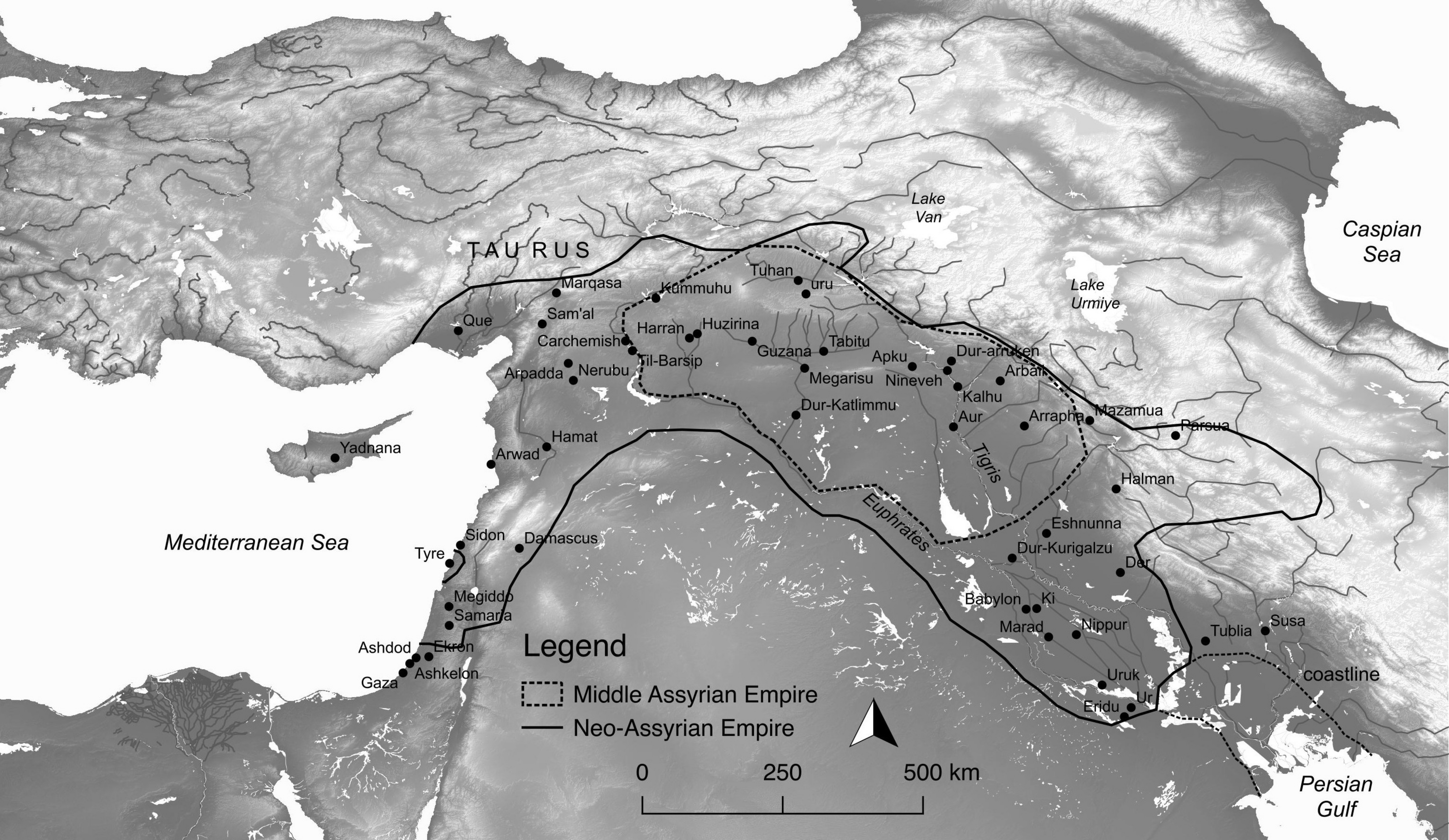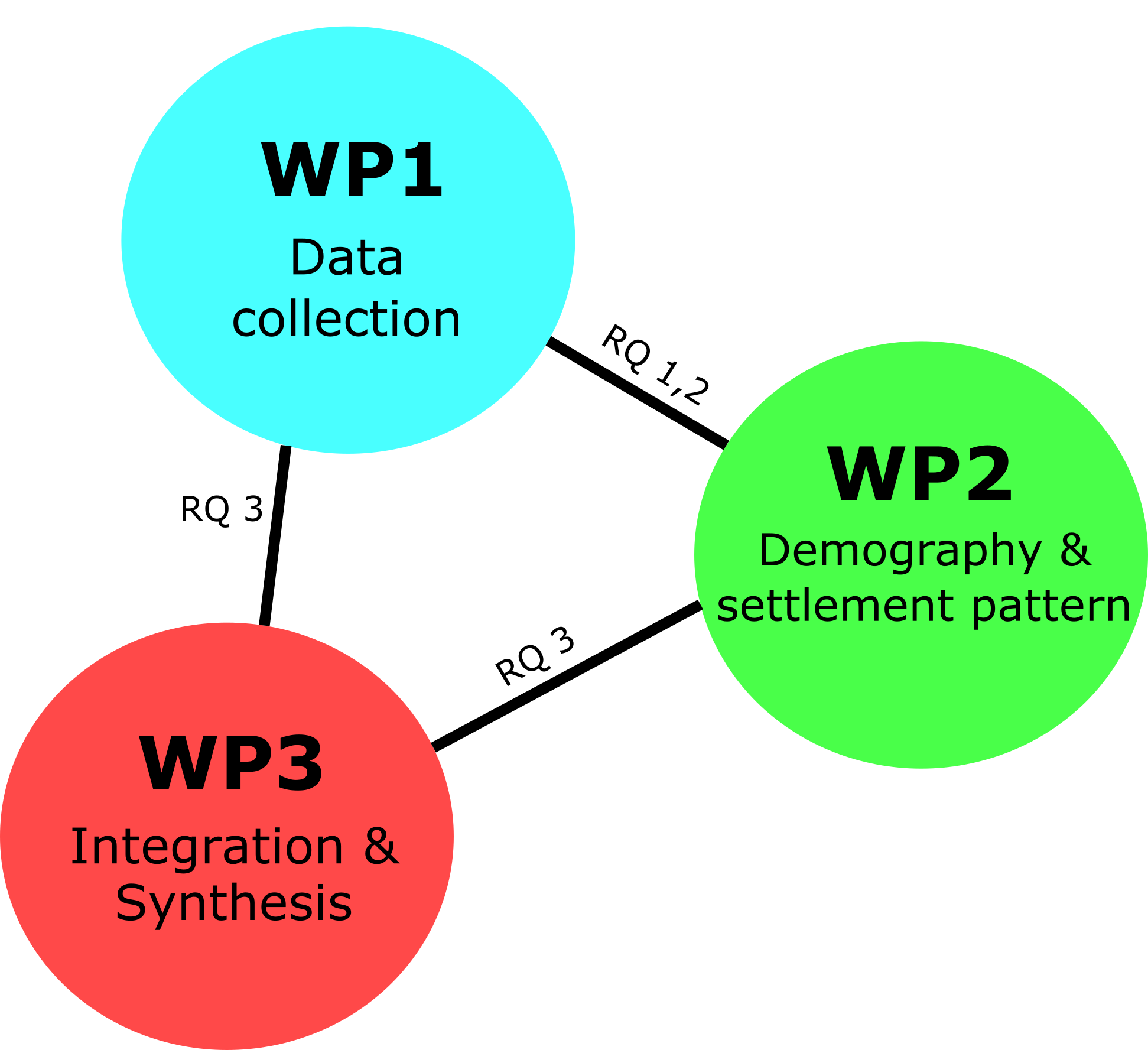The Empire Strikes Back: The Geography of Governance Strategies in the Assyrian Empire
Aree / Gruppi di ricerca
Partecipanti al progetto
- Palmisano Alessio (Responsabile)
Descrizione del progetto
1. INTRODUCTION
How did empires shape physical and cultural landscapes? This question, emphasised by the current political debate between "localists” versus “globalists” about the grand project of European integration, has been puzzling social scientists for the past decade. It is thus increasingly pressing to investigate how imperial strategies affected heterogeneous local communities, contributed to building a long-lasting homogenous culture and identity, and coped with particularistic and centrifugal tendencies in the different provinces and peripheries of empires. For this kind of research, the Assyrian Empire represents an exceptional case study because it is the earliest example of a long-lived macro-state in history (ca. 1250 – 612 BC). Archaeology and history offer a unique perspective in the social science domain, which can assess over the longue durée how the physical and cultural landscapes changed throughout the Near East during the Assyrian domination (Altaweel 2008;Radner 2017). Recent studies have emphasised how imperial strategies were nuanced and varied from region to region rather than defining the Assyrian Empire as a homogenous and monolithic political unit exerting a standardised system of control over the dominated territories (Liverani 1988;Düring 2015;(Düring and Stek 2018).
2. STATE OF THE ART AND RESEARCH QUESTIONS
In the past two decades landscape-based approaches, augmented by the recent development in digital technologies and Geographical Information Systems (GIS), have become an important field in archaeology to address particular targeted research questions beyond the scope of single-site archaeological excavations (Wilkinson 2000). The use of GIS allows researchers to collect, manage, and analyse data in order to create new information and to unfold historical events across space and time. In this perspective, some recent influential studies have investigated the impact of the Assyrian empire on the regions they dominated and complemented the existing works on imperial ideologies and policies drawn from textual, iconographic, and material culture evidence (Wilkinson and Wilkinson 2016; Ur and Osborne 2016; Ur 2017;Morandi Bonacossi 2018). However, this literature has focused mainly on examining the impact of state-societies on a small local scale and in relation to the Neo-Assyrian Empire (10th – 7th century BC) rather than providing long-term narratives. Building on this important corpus of work, I will undertake an ambitious program of research aimed at assessing how the impact of the Assyrian Empire varies significantly by region and partly depending on the long-term socio-ecological dynamics prevailing in different areas. The present project will combine archaeological and textual evidence framed into a spatial approach to address the following research questions (RQ):
- RQ 1. How did settlement patterns vary across time and space and to which degree were they the result of deliberate central
planning or local decisions? - RQ 2. Were fluctuations in demographic trends related to the policy of forced relocation of conquered populations?
- RQ 3. To what extent did state-sponsored policies differ in the core and the peripheries of the Assyrian Empire?
In order to address these three research targets, this project will draw upon the large quantity of data available in the Near East to infer long-term settlement patterns and demographic trends from the Middle Bronze Age to the Hellenistic period (ca. 2000 – 330 BC). Thanks to this approach, it will be possible to assess over the longue durée how the physical and cultural landscapes changed throughout the Near East before, during, and after the Assyrian Empire. I will offer the first systematic collation of archaeological settlement data from published archaeological surveys arranged in a spatial database. The case studies are chosen from those regions that guarantee available archaeological evidence from the Middle Bronze Age to the Hellenistic period (ca. 2000 – 330 BC) and that experienced the Assyrian domination: South-eastern Anatolia, Mesopotamia, and the Levant (Fig. 1). This project will make use of existing digital inventories of textual evidence (e.g., The Royal Inscriptions of Assyria online, State Archives of Assyria Online, The Archival Texts of the Assyrian Empire) and other relevant written sources from the published literature. This holistic approach bridging together archaeology and history will bring new perspectives and theoretical frameworks for understanding imperial practices of imposition, consolidation, and maintenance of power. The contribution of GIS and sophisticated quantitative and computational approaches (e.g., spatial statistics, text-data mining, network analysis) will be at the cutting edge of the research and will allow me, to combine and systematically analyze, for the first time, archaeological and textual evidence to discover the causal mechanism and general principles explaining the dynamics of historical societies.
 Figure 1. The extent of the Middle Assyrian Empire during Tiglath-pileser I's reign (ca. 1115-1075 BC) and of the Neo-Assyrian Empire (ca. 670 BC).
Figure 1. The extent of the Middle Assyrian Empire during Tiglath-pileser I's reign (ca. 1115-1075 BC) and of the Neo-Assyrian Empire (ca. 670 BC).
3. MATERIALS AND METHODS
The proposed project will be structured into three work packages (WP1-3), which are related to the research questions (RQ1-3).

WP1 is dedicated to the creation of a spatial database of archaeological sites via the harmonisation of existing online databases and both electronic and print publications (e.g., reports and gazetteers relating to different archaeological surveys) and the review of the existing digital inventories of textual evidence (e.g., The LMU Munich Open-access Cuneiform Corpus Initiative, Ancient Records of Middle Eastern Polities) and other relevant written sources.
WP2 will focus on the reconstruction of demographic trends using a variety of new and old techniques, including aoristic analysis and Monte Carlo simulations to deal with the temporal uncertainty of sites’ occupation periods. In this case, it will be possible to quantitatively test if population fluctuations are the result of coordinated schemes of resettlement and forced deportations fostered by the Assyrian central authority. Long-established methods such as rank-size and Gini coefficient will be employed to assess settlement hierarchies in the long-run and if drastic changes in settlement patterns occur in those areas where the Assyrian Empire established its power. Techniques of text-data mining will be used to extract valuable information from digital repositories of Assyrian texts.
WP3 will integrate and synthesise textual and archaeological evidence to infer modes of imperial domination and identity-building on both local and pan-regional scale across time. This last work package represents the final stage of the research and will employ a comprehensive synthesis of the outputs derived from the WP1-2. This last stage of the research will evaluate comparatively how variegated the degree of control of the Assyrians over the conquered regions was.
The development of an interdisciplinary approach bridging together Archaeology and History, will bring new perspectives and theoretical frameworks to understand imperial practices of imposition, consolidation and maintenance of power in the longue durée. The comparative and long-term approach of the present project will build new theories to be applied at a macro-regional scale to predict the consequences of specific policies, to encourage the development of strategies of governance promoting the role of transnational cooperative communities and to avoid unintended consequences (e.g., political fragmentation).
REFERENCES
- Altaweel, M., 2008. The imperial landscape of Ashur: settlement and land use in the Assyrian heartland. Heidelberg: Heidelberg OrientVerlag.
- Düring, B. S., 2015. The Hegemonic Practices of the Middle Assyrian Empire in Context. In: B. S. Düring (ed.), Understanding Hegemonic Practices of the Early Assyrian Empire. Leiden: Nederlands Instituut voor het Nabije Oosten (NINO), pp. 289– 311.
- Düring, B. S., and Stek, T. D., 2018 (eds.). The Archaeology of Imperial Landscapes. A Comparative Study of Empires in the Ancient Near East and Mediterranean World. Cambridge: Cambridge University Press.
- Liverani, M., 1988. The Growth of the Assyrian Empire in the Habur/ Middle Euphrates Area: A New Paradigm. State Archives of Assyria Bulletin 2, pp. 81-98.
- Morandi Bonacossi, D., 2018. The creation of the Assyrian heartland: new data from the ‘Land Behind Nineveh’. In: In: B. S. Düring (ed.), Understanding Hegemonic Practices of the Early Assyrian Empire. Leiden: Nederlands Instituut voor het Nabije Oosten (NINO), pp. 48-85.
- Radner, K., 2017. Economy, Society, and Daily Life in the Neo-Assyrian Period. In: E. Frahm (Ed.), A Companion to Assyria. Hoboken, NJ: Wiley Blackwell, pp. 209-228.
- Ur, J., 2017. Physical and Cultural Landscapes of Assyria. In: E. Frahm (Ed.), A Companion to Assyria. Hoboken, NJ: Wiley Blackwell, pp. 13-35.
- Ur, J., and Osborne, J., 2016. The rural landscape of the Assyrian heartland: recent results from Arbail and Kilizu provinces. In: J. MacGinnis, D. Wicke, and T. Greenfield (Eds.), The Provincial Archaeology of the Assyrian Empire. Cambridge: McDonald Institute for Archaeological Research, pp. 163-174.
- Wilkinson, T., J., 2000. Regional approaches to Mesopotamian archaeology: The contribution of archaeological surveys. Journal of Archaeological Research 8(3), pp. 219–67.
- Wilkinson, T.J., and Wilkinson, E.B., 2016. The Iron Age of the Middle Euphrates in Syria and Turkey. In: J. MacGinnis, D. Wicke, and T. Greenfield (Eds.), The Provincial Archaeology of the Assyrian Empire. Cambridge: McDonald Institute for Archaeological Research, pp. 213-228.
Risultati e pubblicazioni
Palmisano, A., and Squitieri, A., 2023. Review of A. Faust, The Neo-Assyrian Empire in the Southwest: Imperial Domination and Its Consequences. Bulletin of the American Schools of Oriental Research, 389, 235-238. https://iris.unito.it/handle/2318/1911990





